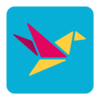Top 10
New Followers
The creators with most new followers in this month
Jason
Product specialist @ Airtable
Total Followers: 43

David Peterson
Growth @ Airtable. Organizing the world one base at a time.
Total Followers: 217

Howie Liu
Cofounder of Airtable.
Total Followers: 115

Animalz
We're creating the highest-quality content on the internet for SaaS businesses. animalz.co
Total Followers: 46

Katherine Duh
Marketing at Airtable. And a whole lot of Universe stuff ??? Twitter: @katherineduh
Total Followers: 104

Shai Goldman
https://www.linkedin.com/in/shaigoldman
Total Followers: 69

Wyatt McBain
Mobile developer at ZX Ventures and helping others build in React Native with http://reactnativecoach.com.
Total Followers: 59

Fullscreen Media
Fullscreen is a place where creators, brands, and fans join forces. https://fullscreenmedia.co/
Total Followers: 59
Nick Raff
Fusce et molestie dolor, et facilisis nulla. Cras auctor eros sed sed.
Total Followers: 4

Lauren Tan
Lauren is a Senior Full Stack Engineer at Netflix and accomplished public speaker. Previously, she was Senior Developer at DockYard, a user experience driven software consultancy based in Boston, MA.
Total Followers: 54
Top 10
New Likes
The bases with the most new likes this month
Movies & TV Log and Ratings
Movie buff? TV aficionado? This is the base for you! Rate, organize, and track your new-to-you movies, movie and TV suggestions, and previously watched! Get a monthly round up of how many movies or shows you’ve watched that month, new to you movies that month, and a yearly round up of your favorites and stats. Bonus items: keep track of movie directors, where you watched movies and TV, which TV shows and movies you own, and customize genres as much as you want. Regular theater goer? Keep your favorite theaters handy with a list of amenities, address, website, and ratings. Track the movies you’ve seen there as well! With forms for suggestions, add them to your website and send them to your friends to easily fill out and get new movie and TV suggestions. With so many different views, metrics, and customizations, you can truly make this your own. From a macroview of everything, to a microview of just about anything, you’ll be able to find it easily. Only want to track all movies watched or only new movies watched? Hide or delete those fields and unlink them. Dates filled from November 2019 to December 2020!
Total Likes: 2
Simple Project Manager
I developed this project manager to help keep my projects organized when working on multiple videos at once, but it could easily be used for any project type. While it's really only a personal base, I've included a field for collaborators as well. One of the best features of the base is the ability to start a project with a form link which then redirects you to start inputting tasks related to that project. The base organizes it for you as you input tasks. I'm continually building this out so I may add and improve features as I go, but my goal was to keep it as simple and uncluttered as possible. Therefore, I kept the amount of views, tables, and blocks to an absolute minimum. Because the last thing a project manager should feel like is more work...
Total Likes: 1
Science communication | Science Policy Resources
Ever needed to find what possible science policy and science communication resources were available in your discipline? Now it's all in one place! The National Science Policy Network is a grassroots organization created by early-career scholars interested in building a community around those interested in science policy.
Total Likes: 1
Disaster Recovery Plan
Face it, disasters really suck! Worse, is facing a disaster scenario, without a master plan! Disaster recovery is more than, backups, antivirus, and intrusion detection software to name a few. This is one of many tools to help you IDENTIFY, PLAN FOR, TRACK, and COMMUNICATE about any potential disaster. I created a company to help others make decisions that move their company forward. This is the reason why I called it Decision Forward, LLC. Visit us online here: [https://www.decisionforward.com](https://www.decisionforward.com/)
Total Likes: 1
Network Tracker
Simple Networking Tracker This base is designed to track a wide network to ensure you stay on top of the connections you've made or want to make. Every time you meet someone or receive a business card, plug in their information into this tracker specifying things such as their organization, role, location, expertise, and last meeting to ensure future communications are personal. Travelling to a city? Group by location to reconnect with those you've met in the past. Never forget a connection again!
Total Likes: 1
Resource Planning
Summary While planning future projects, an understanding of the availability of each team member is vital. Without visibility into the projects and the corresponding time requirement assigned to each team member, it's easy to mis-allocate resources. This base aims to avoid that by answering a few questions: 1. Who has some availability in the planned period? 2. If an individual is available in the planned period, how much of their time is available? 3. When is a person completely available? By reviewing project assignments and restrictions on an individuals time, you can: 1. Reduce wasted time of underutilized personnel 2. Redistribute work from over-allocated teammates 3. Limit delays caused by a mis-alignment of project needs and the availability of team members Be sure to jump over to the [Resource Planning](https://airtable.com/tblzrLGYGvtkxCgFi/viwBb0VvjI4dupvVr?blocks=bipHFuBn8kPMUAChv&bip=full) dashboard in this base to review the dynamic dashboard! Structure of the Base Each table is required to enable a user to review the availability of all personnel in a specified period. Projects Each record in the Projects table contains high-level, project related information, and is linked only to the Allocation table. A Project may be linked to many records in the Allocation table. Allocation Each record in the Allocation table contains the details of each individuals (Personnel) assignment to a Project. Each Allocation denotes a single individuals assignment to a single project, and includes details such as the percentage of time he/she is expected to spend on the associated Project. Personnel Each record in Personnel table contains the details of that individuals project assignments (Allocations), and is linked to a single record in the Planning table that contains the period in which the user would like to review an individuals availability. Data Flow 1. Each record in the Personnel table uses the link to a record in the Planning table to _lookup_ the start and end date of the planned period. 2. Each record in the Allocation table uses the link to a record in the Personnel table to _lookup_ the start and end date of the planned period. Each Allocation record also uses the link to a record in the Projects table to _lookup_ the assigned project's start and end date. 3. The 'Planning Period Allocation' field uses a _formula_ to compare the start and end dates of the project to the start and end dates of the planned period. If there is any overlap, the percent of time allocated to that particular project is returned. 4. Each record in the Personnel table _rolls up_ the percentage of the individual's time currently allocated in the associated planning period by summing the values contained in the 'Planning Period Allocation' field in the Allocation table. 5. Based on the percentage calculated in the 'Total Allocation in Planned Period' field, additional formula fields can be used used to highlight each person's availability, or lack thereof. 6. Based on the information available in these formula fields, we can create _views_ to help identify available personnel. Other Uses Some other uses of this base structure might include: - Equipment availability management - Inventory search by barcode
Total Likes: 1
Top 10
New Copies
The bases with the most new copies this month
Nonprofit Donor & Grants Database
Welcome to the Nonprofit Donor & Grants Database! If you are outgrowing your series of donor spreadsheets, but aren't quite ready to dive into a complicated database system, you are in the right place. There are five tabs: - Donations: With templates for annual and campaign reports and tracking thank you letters - Individuals: Track contact information, social media, and cross-reference with both donations and organizational information. - Organizations: Organizational data and reports, including a beta of our LYBUNT (Last Year But Unfortunately Not This) report. - Campaigns/Programs: Take a look at your designations collectively or individually. - Fundraising Staff: See what your staff has on their plates and coordinate between them. - Workplan/Pipeline: Track grant and major gift tasks and process to help you project your income. And yes, I did use feminist historical figures as my sample data (US suffragists for the donors, 1970s era for my fundraisers). Because we should all know their names and how they helped shape our world. Learn more about how to do better at doing good over at [www.dobetter.consulting](http://www.dobetter.consulting/) [Donations](https://airtable.com/tblFnSQEdLZ1J0L5R?blocks=hide)[Individuals](https://airtable.com/tblQUsZGvuXxTMaKR?blocks=hide)[Organizations](https://airtable.com/tbliIaRZDKsmSIH66?blocks=hide)[Campaigns/Programs](https://airtable.com/tbl3hT0FHO98hf1FD?blocks=hide)[Fundraising Staff](https://airtable.com/tbl4fq1XaUxYipWi0?blocks=hide)[Workplan/Pipeline](https://airtable.com/tblmHr1anRfzG5J5m?blocks=hide)
Total Copies: 17
DNA Research Log
This is a base for keeping track of your DNA matches and genetic genealogy searches. Avoid duplicating data entry by keeping track of DNA matches in one table and research relating to each DNA match in the research log. Link to the name of the match in your research log so you know which DNA match you are researching.
Total Copies: 15
Movies & TV Log and Ratings
Movie buff? TV aficionado? This is the base for you! Rate, organize, and track your new-to-you movies, movie and TV suggestions, and previously watched! Get a monthly round up of how many movies or shows you’ve watched that month, new to you movies that month, and a yearly round up of your favorites and stats. Bonus items: keep track of movie directors, where you watched movies and TV, which TV shows and movies you own, and customize genres as much as you want. Regular theater goer? Keep your favorite theaters handy with a list of amenities, address, website, and ratings. Track the movies you’ve seen there as well! With forms for suggestions, add them to your website and send them to your friends to easily fill out and get new movie and TV suggestions. With so many different views, metrics, and customizations, you can truly make this your own. From a macroview of everything, to a microview of just about anything, you’ll be able to find it easily. Only want to track all movies watched or only new movies watched? Hide or delete those fields and unlink them. Dates filled from November 2019 to December 2020!
Total Copies: 7
Simple Project Manager
I developed this project manager to help keep my projects organized when working on multiple videos at once, but it could easily be used for any project type. While it's really only a personal base, I've included a field for collaborators as well. One of the best features of the base is the ability to start a project with a form link which then redirects you to start inputting tasks related to that project. The base organizes it for you as you input tasks. I'm continually building this out so I may add and improve features as I go, but my goal was to keep it as simple and uncluttered as possible. Therefore, I kept the amount of views, tables, and blocks to an absolute minimum. Because the last thing a project manager should feel like is more work...
Total Copies: 7
Ultimate TODO
A todo app with a comprehensive list of features. It makes heavy use of: - grouping and views in order to see one's organization from different angles, - automatic sorting such that the most prioritized tasks always appear at the top. Only two tables are defined, - one for the list of tasks, - one for the projects these tasks belong to.
Total Copies: 6
Network Tracker
Simple Networking Tracker This base is designed to track a wide network to ensure you stay on top of the connections you've made or want to make. Every time you meet someone or receive a business card, plug in their information into this tracker specifying things such as their organization, role, location, expertise, and last meeting to ensure future communications are personal. Travelling to a city? Group by location to reconnect with those you've met in the past. Never forget a connection again!
Total Copies: 6
Resource Planning
Summary While planning future projects, an understanding of the availability of each team member is vital. Without visibility into the projects and the corresponding time requirement assigned to each team member, it's easy to mis-allocate resources. This base aims to avoid that by answering a few questions: 1. Who has some availability in the planned period? 2. If an individual is available in the planned period, how much of their time is available? 3. When is a person completely available? By reviewing project assignments and restrictions on an individuals time, you can: 1. Reduce wasted time of underutilized personnel 2. Redistribute work from over-allocated teammates 3. Limit delays caused by a mis-alignment of project needs and the availability of team members Be sure to jump over to the [Resource Planning](https://airtable.com/tblzrLGYGvtkxCgFi/viwBb0VvjI4dupvVr?blocks=bipHFuBn8kPMUAChv&bip=full) dashboard in this base to review the dynamic dashboard! Structure of the Base Each table is required to enable a user to review the availability of all personnel in a specified period. Projects Each record in the Projects table contains high-level, project related information, and is linked only to the Allocation table. A Project may be linked to many records in the Allocation table. Allocation Each record in the Allocation table contains the details of each individuals (Personnel) assignment to a Project. Each Allocation denotes a single individuals assignment to a single project, and includes details such as the percentage of time he/she is expected to spend on the associated Project. Personnel Each record in Personnel table contains the details of that individuals project assignments (Allocations), and is linked to a single record in the Planning table that contains the period in which the user would like to review an individuals availability. Data Flow 1. Each record in the Personnel table uses the link to a record in the Planning table to _lookup_ the start and end date of the planned period. 2. Each record in the Allocation table uses the link to a record in the Personnel table to _lookup_ the start and end date of the planned period. Each Allocation record also uses the link to a record in the Projects table to _lookup_ the assigned project's start and end date. 3. The 'Planning Period Allocation' field uses a _formula_ to compare the start and end dates of the project to the start and end dates of the planned period. If there is any overlap, the percent of time allocated to that particular project is returned. 4. Each record in the Personnel table _rolls up_ the percentage of the individual's time currently allocated in the associated planning period by summing the values contained in the 'Planning Period Allocation' field in the Allocation table. 5. Based on the percentage calculated in the 'Total Allocation in Planned Period' field, additional formula fields can be used used to highlight each person's availability, or lack thereof. 6. Based on the information available in these formula fields, we can create _views_ to help identify available personnel. Other Uses Some other uses of this base structure might include: - Equipment availability management - Inventory search by barcode
Total Copies: 6
EVELYN: Experiment Velocity Engine Lifting Your Numbers
What is EVELYN? EVELYN is a central place to track experiments, starting at the idea stage. It stands for “Experiment Velocity Engine, Lifting Your Numbers.” There are 4 tables: - Experiments - All experiments in EVELYN, with many specific views. - Metrics - The metrics our experiments aim to move. - Surfaces - The surfaces on which our experiments run with list of current experiments for each. - Populations - The populations to which our experiments are targeted. Recommended Views For each team running experiments, we recommend having at least 2 views: 1. Idea Backlog - showing Status=[Idea,Sized Idea] 2. In Progress - showing Status=[Specing/Designing,Building,Waiting to Run,Running,Analyzing,Concluding] Fields EID: Unique ID, autonumber. Good for identifying experiments across specs and tickets. Name: Name or short description. Text. Name or brief 5-20 word description of experiment that is easily understandable to outside teams, e.g. “Upsell on Downgrades.” Description: Thorough description, to avoid opening spec doc for context. Spec: URL Link to spec for experiment. Team: Team owning experiment. Select from . Status: Status in process. Sizing: Data/info needed to size; the textual description of data we should look at to see if this is a valuable idea, e.g., views of starting experience, current conversion rate, potential users affected. Blocked: Checkbox to flag if an experiment is blocked. “Notes” should contain reason. Notes: Text notes about experiment. Notes should be used to provide a quick update as to where the project stands, or if there are complications, e.g., "Experiment blocked due to Admin Console refactor." Tags: Free-form tags for projects. Field to support categorizations of projects that don’t quite merit their own column, esp. temporary-but-important classifications like “Taurus Blocker." Suggested By: Collaborator field; person suggesting idea. Status Options - Idea - New idea, no T-shirt sizing - Sized Idea - Idea + T-shirt eng/design costing and T-shirt impact sizing. - Specing/Designing - Currently being spec’d (possibly numerically oppt sized/costed) - Building - Experiment is being built and QA’d - Waiting to Run - Completed building, on production and ready to be turned on - Running - Experiment is running on production - Analyzing - Completed gather data. Looking at data and coming to a decision on next steps - Concluding - We’ve made the decision and now we’re executing it - Complete - Experiment is complete, and code has been cleaned up Idea Backlog For sizing ideas and selecting which to build. Action to take: - Add T-shirt sizing for: Impact, Metric, Eng Cost and Design Cost - When T-shirt sized, set Status→Sized Idea - When ready to spec, set Status→Design/Spec - This will remove from view, move to Designing/Specing view Metric: Metric this experiment will affect. Linked-to-Table: . Metric with name and units, ie “ARR ($M)” or “Activation (% abs)”. This determines the units of the Oppt Size and Metrics Result columns. T-Shirt: Score: T-shirt impact score formula, i.e. the effort::reward ratio for this idea, broadly Formula: {T-Shirt: Impact} - {T-Shirt: Eng Cost} - {T-Shirt: Design Cost} + {T-Shirt: Adjustment}. T-Shirt: Impact: T-shirt impact estimate, i.e. impact this experiment could have, broadly. Select: Low, Medium, High (maps to 1,5,10). T-Shirt: Eng Cost: T-shirt estimate of eng cost. Select: None, Cheap, Medium, Expensive (maps to 1,2,3,4). T-Shirt: Design Cost: T-shirt estimate of design cost. Select: None, Cheap, Medium, Expensive (maps to 1,2,3,4). T-Shirt: Adjustment: T-shirt adjustment for other factors. Note: not required for T-Shirt Score to be calculated. Optional select: Very Hard, Hard, Easy, Very Easy (-2, -1, +1, +2). Provides easy way to adjust for a difficult surface or other factors. E.g. an experiment on a busy surface might be flagged as "Hard" to lower its T-Shirt: Score. (Hidden fields): Note: We have "T-Shirt : X" fields for each of the T-Shirt fields to make them numeric. Designing/Specing Action to take: - Add Oppt Sizing: Oppt Size, Confidence, Eng Estimate, Design Estimate - Add Owner, Designer, Engineer on project - Add Rule, Surfaces and Population - Optionally add: expected Start/End (run time), Target GA Quarter, Designs - When ready to build, set Status→Building - This will remove from view, move to Building view Oppt Size: Estimated Metric win if successful. Amount we’d move the Metric if this experiment works. Units are on the “Metric” column value. Confidence: How confident we are that this experiment will win, expressed as a percent chance of success. In general: - Low confidence (10-30%) for new surfaces - Medium (~50%) for known surfaces - High (~80%) for well-understood experiments (such as successful experiments on a new surface) i.e., if you run many 50% experiments, you would expect around half of them to be successful. Project: Sub-team objective or project, if any. Set to “Foundational” for non-experiments. Flexible field so teams can specify project or team objective. E.g: Foundational, Basic signup suggestion (on Intent), etc. Non-experiments should have this field set to “Foundational.” Eng Estimate: Estimated weeks for engineering to build. Fractional weeks of fully-devoted eng time, i.e. “1” or “0.5” or “4.5” etc. Design Estimate: Estimated weeks for design to design. Weeks of fully-devoted eng time, e.g. “1” or “0.5” or “4.5” etc. Oppt ROI Estimate: Expected result per week of effort. Formula: {Oppt Size}Confidence/({Eng Estimate}+{Design Estimate}). Owner: Owner, e.g. person running the experiment, any function. Designer: Designer for this experiment. Engineer: Engineer building and/or owning. Rule: Rule name for this experiment. Unique text string of rule this experiment is key off of. Surfaces: Surfaces your experiment or feature will affect. [Linked Record with Surfaces]. Either part of the site, feature, flow or url. Please be specific and exhaustive as we will use this to avoid conflicts and do historical analysis. Example values: mobile signup, referral onboarding, workspace upgrade, etc. Populations: Populations this exp is targeted at. Linked Record with Populations table, i.e. “Basic, EN.” Designs: Designs associated with experiment. Image files (any format) for this experiment. Could be screenshots, mocks, wireframes, etc. Must be image file and directly uploaded, not url or InVision, etc. Start: Date the experiment is planned to start running. Also see: "_Start: Running" at bottom End: Date the experiment is planned to stop running. Target GA Quarter: Quarter this is planned for GA, if any. Quarter and year, i.e. “Q2 2018.” Building + Running Actions to take: - Set Engineer if blank - Change Status→Building on start of eng work - Change Status→Waiting to Run when build complete - Removes from this view, adds to Running view - When completed running, change Status→Analyze - Removes from this view, adds to below view Sprint: Sprint we plan to tile this against. Teams may use this to note the dash they expect this to land in or want to be tiled in. This could be used to filter tasks for tiling, and to figure out our team’s eng velocity. We don’t include year since most year-old experiments will be filtered out since their Status→Complete. Sprint Commits: Engineering, product and design goals and grades in a sprint/dash for a specific project. Teams may use this to scope and grade sprint commitments, with priority first then goal, ie: "P1: Build." At the end of a sprint/dash, we can add grades in the form of an emoji, put first for a clean look: "P1: Build :) " Analyzing / Concluding Actions to take in this view: - When completed analyzing, change Status→Concluding - When completed clean up/GA, change Status→Complete - Removes from this view, adds to Complete view Metric Result: How much we moved the Metric. Expressed in number with 3 decimal places, ie “1.000” or “0.030”. Units are in Metric column. I.e., if the metric were “Activation (% abs)” and the Metric Result was ”5.000”, then it would mean the experiment resulted in a 5% absolute gain. Learnings: Learnings we gained from running this experiment. Textual learnings, such as: “Telling users to Buy Now successfully got them to purchase immediately.” Could include link to Result paper doc. GA’d Date: Date on which we GA’d this experiment. Date specifying when we did (not “will”) GA the experience to a set of users. This could be either setting the Stormcrow rule to 100% new variant or releasing the updated code. Ideally, this GA date is the date we started realizing the full Metric Result. Cleaned Up: Whether this experiment is cleaned up. Checkbox: True - if cleaned up, else False/blank. Complete (Wins/Losses) Supports viewing past experiments, sipping a glass in quiet reflection. Hidden Fields Fields in the background, keeping the beat, like a bass guitar.
Total Copies: 4
Disaster Recovery Plan
Face it, disasters really suck! Worse, is facing a disaster scenario, without a master plan! Disaster recovery is more than, backups, antivirus, and intrusion detection software to name a few. This is one of many tools to help you IDENTIFY, PLAN FOR, TRACK, and COMMUNICATE about any potential disaster. I created a company to help others make decisions that move their company forward. This is the reason why I called it Decision Forward, LLC. Visit us online here: [https://www.decisionforward.com](https://www.decisionforward.com/)
Total Copies: 2
Science communication | Science Policy Resources
Ever needed to find what possible science policy and science communication resources were available in your discipline? Now it's all in one place! The National Science Policy Network is a grassroots organization created by early-career scholars interested in building a community around those interested in science policy.
Total Copies: 1
15
New Bases
Bases added to the universe this month
UK Election Results 2017
Some interesting views and charts based on the UK General Election results of 2017. Result data downloaded from data.gov.uk.
0 Likes | 0 Copies
Movies & TV Log and Ratings
Movie buff? TV aficionado? This is the base for you! Rate, organize, and track your new-to-you movies, movie and TV suggestions, and previously watched! Get a monthly round up of how many movies or shows you’ve watched that month, new to you movies that month, and a yearly round up of your favorites and stats. Bonus items: keep track of movie directors, where you watched movies and TV, which TV shows and movies you own, and customize genres as much as you want. Regular theater goer? Keep your favorite theaters handy with a list of amenities, address, website, and ratings. Track the movies you’ve seen there as well! With forms for suggestions, add them to your website and send them to your friends to easily fill out and get new movie and TV suggestions. With so many different views, metrics, and customizations, you can truly make this your own. From a macroview of everything, to a microview of just about anything, you’ll be able to find it easily. Only want to track all movies watched or only new movies watched? Hide or delete those fields and unlink them. Dates filled from November 2019 to December 2020!
2 Likes | 7 Copies
Ultimate TODO
A todo app with a comprehensive list of features. It makes heavy use of: - grouping and views in order to see one's organization from different angles, - automatic sorting such that the most prioritized tasks always appear at the top. Only two tables are defined, - one for the list of tasks, - one for the projects these tasks belong to.
0 Likes | 6 Copies
Simple Project Manager
I developed this project manager to help keep my projects organized when working on multiple videos at once, but it could easily be used for any project type. While it's really only a personal base, I've included a field for collaborators as well. One of the best features of the base is the ability to start a project with a form link which then redirects you to start inputting tasks related to that project. The base organizes it for you as you input tasks. I'm continually building this out so I may add and improve features as I go, but my goal was to keep it as simple and uncluttered as possible. Therefore, I kept the amount of views, tables, and blocks to an absolute minimum. Because the last thing a project manager should feel like is more work...
1 Likes | 7 Copies
DNA Research Log
This is a base for keeping track of your DNA matches and genetic genealogy searches. Avoid duplicating data entry by keeping track of DNA matches in one table and research relating to each DNA match in the research log. Link to the name of the match in your research log so you know which DNA match you are researching.
0 Likes | 15 Copies
Science communication | Science Policy Resources
Ever needed to find what possible science policy and science communication resources were available in your discipline? Now it's all in one place! The National Science Policy Network is a grassroots organization created by early-career scholars interested in building a community around those interested in science policy.
1 Likes | 1 Copies
EVELYN: Experiment Velocity Engine Lifting Your Numbers
What is EVELYN? EVELYN is a central place to track experiments, starting at the idea stage. It stands for “Experiment Velocity Engine, Lifting Your Numbers.” There are 4 tables: - Experiments - All experiments in EVELYN, with many specific views. - Metrics - The metrics our experiments aim to move. - Surfaces - The surfaces on which our experiments run with list of current experiments for each. - Populations - The populations to which our experiments are targeted. Recommended Views For each team running experiments, we recommend having at least 2 views: 1. Idea Backlog - showing Status=[Idea,Sized Idea] 2. In Progress - showing Status=[Specing/Designing,Building,Waiting to Run,Running,Analyzing,Concluding] Fields EID: Unique ID, autonumber. Good for identifying experiments across specs and tickets. Name: Name or short description. Text. Name or brief 5-20 word description of experiment that is easily understandable to outside teams, e.g. “Upsell on Downgrades.” Description: Thorough description, to avoid opening spec doc for context. Spec: URL Link to spec for experiment. Team: Team owning experiment. Select from . Status: Status in process. Sizing: Data/info needed to size; the textual description of data we should look at to see if this is a valuable idea, e.g., views of starting experience, current conversion rate, potential users affected. Blocked: Checkbox to flag if an experiment is blocked. “Notes” should contain reason. Notes: Text notes about experiment. Notes should be used to provide a quick update as to where the project stands, or if there are complications, e.g., "Experiment blocked due to Admin Console refactor." Tags: Free-form tags for projects. Field to support categorizations of projects that don’t quite merit their own column, esp. temporary-but-important classifications like “Taurus Blocker." Suggested By: Collaborator field; person suggesting idea. Status Options - Idea - New idea, no T-shirt sizing - Sized Idea - Idea + T-shirt eng/design costing and T-shirt impact sizing. - Specing/Designing - Currently being spec’d (possibly numerically oppt sized/costed) - Building - Experiment is being built and QA’d - Waiting to Run - Completed building, on production and ready to be turned on - Running - Experiment is running on production - Analyzing - Completed gather data. Looking at data and coming to a decision on next steps - Concluding - We’ve made the decision and now we’re executing it - Complete - Experiment is complete, and code has been cleaned up Idea Backlog For sizing ideas and selecting which to build. Action to take: - Add T-shirt sizing for: Impact, Metric, Eng Cost and Design Cost - When T-shirt sized, set Status→Sized Idea - When ready to spec, set Status→Design/Spec - This will remove from view, move to Designing/Specing view Metric: Metric this experiment will affect. Linked-to-Table: . Metric with name and units, ie “ARR ($M)” or “Activation (% abs)”. This determines the units of the Oppt Size and Metrics Result columns. T-Shirt: Score: T-shirt impact score formula, i.e. the effort::reward ratio for this idea, broadly Formula: {T-Shirt: Impact} - {T-Shirt: Eng Cost} - {T-Shirt: Design Cost} + {T-Shirt: Adjustment}. T-Shirt: Impact: T-shirt impact estimate, i.e. impact this experiment could have, broadly. Select: Low, Medium, High (maps to 1,5,10). T-Shirt: Eng Cost: T-shirt estimate of eng cost. Select: None, Cheap, Medium, Expensive (maps to 1,2,3,4). T-Shirt: Design Cost: T-shirt estimate of design cost. Select: None, Cheap, Medium, Expensive (maps to 1,2,3,4). T-Shirt: Adjustment: T-shirt adjustment for other factors. Note: not required for T-Shirt Score to be calculated. Optional select: Very Hard, Hard, Easy, Very Easy (-2, -1, +1, +2). Provides easy way to adjust for a difficult surface or other factors. E.g. an experiment on a busy surface might be flagged as "Hard" to lower its T-Shirt: Score. (Hidden fields): Note: We have "T-Shirt : X" fields for each of the T-Shirt fields to make them numeric. Designing/Specing Action to take: - Add Oppt Sizing: Oppt Size, Confidence, Eng Estimate, Design Estimate - Add Owner, Designer, Engineer on project - Add Rule, Surfaces and Population - Optionally add: expected Start/End (run time), Target GA Quarter, Designs - When ready to build, set Status→Building - This will remove from view, move to Building view Oppt Size: Estimated Metric win if successful. Amount we’d move the Metric if this experiment works. Units are on the “Metric” column value. Confidence: How confident we are that this experiment will win, expressed as a percent chance of success. In general: - Low confidence (10-30%) for new surfaces - Medium (~50%) for known surfaces - High (~80%) for well-understood experiments (such as successful experiments on a new surface) i.e., if you run many 50% experiments, you would expect around half of them to be successful. Project: Sub-team objective or project, if any. Set to “Foundational” for non-experiments. Flexible field so teams can specify project or team objective. E.g: Foundational, Basic signup suggestion (on Intent), etc. Non-experiments should have this field set to “Foundational.” Eng Estimate: Estimated weeks for engineering to build. Fractional weeks of fully-devoted eng time, i.e. “1” or “0.5” or “4.5” etc. Design Estimate: Estimated weeks for design to design. Weeks of fully-devoted eng time, e.g. “1” or “0.5” or “4.5” etc. Oppt ROI Estimate: Expected result per week of effort. Formula: {Oppt Size}Confidence/({Eng Estimate}+{Design Estimate}). Owner: Owner, e.g. person running the experiment, any function. Designer: Designer for this experiment. Engineer: Engineer building and/or owning. Rule: Rule name for this experiment. Unique text string of rule this experiment is key off of. Surfaces: Surfaces your experiment or feature will affect. [Linked Record with Surfaces]. Either part of the site, feature, flow or url. Please be specific and exhaustive as we will use this to avoid conflicts and do historical analysis. Example values: mobile signup, referral onboarding, workspace upgrade, etc. Populations: Populations this exp is targeted at. Linked Record with Populations table, i.e. “Basic, EN.” Designs: Designs associated with experiment. Image files (any format) for this experiment. Could be screenshots, mocks, wireframes, etc. Must be image file and directly uploaded, not url or InVision, etc. Start: Date the experiment is planned to start running. Also see: "_Start: Running" at bottom End: Date the experiment is planned to stop running. Target GA Quarter: Quarter this is planned for GA, if any. Quarter and year, i.e. “Q2 2018.” Building + Running Actions to take: - Set Engineer if blank - Change Status→Building on start of eng work - Change Status→Waiting to Run when build complete - Removes from this view, adds to Running view - When completed running, change Status→Analyze - Removes from this view, adds to below view Sprint: Sprint we plan to tile this against. Teams may use this to note the dash they expect this to land in or want to be tiled in. This could be used to filter tasks for tiling, and to figure out our team’s eng velocity. We don’t include year since most year-old experiments will be filtered out since their Status→Complete. Sprint Commits: Engineering, product and design goals and grades in a sprint/dash for a specific project. Teams may use this to scope and grade sprint commitments, with priority first then goal, ie: "P1: Build." At the end of a sprint/dash, we can add grades in the form of an emoji, put first for a clean look: "P1: Build :) " Analyzing / Concluding Actions to take in this view: - When completed analyzing, change Status→Concluding - When completed clean up/GA, change Status→Complete - Removes from this view, adds to Complete view Metric Result: How much we moved the Metric. Expressed in number with 3 decimal places, ie “1.000” or “0.030”. Units are in Metric column. I.e., if the metric were “Activation (% abs)” and the Metric Result was ”5.000”, then it would mean the experiment resulted in a 5% absolute gain. Learnings: Learnings we gained from running this experiment. Textual learnings, such as: “Telling users to Buy Now successfully got them to purchase immediately.” Could include link to Result paper doc. GA’d Date: Date on which we GA’d this experiment. Date specifying when we did (not “will”) GA the experience to a set of users. This could be either setting the Stormcrow rule to 100% new variant or releasing the updated code. Ideally, this GA date is the date we started realizing the full Metric Result. Cleaned Up: Whether this experiment is cleaned up. Checkbox: True - if cleaned up, else False/blank. Complete (Wins/Losses) Supports viewing past experiments, sipping a glass in quiet reflection. Hidden Fields Fields in the background, keeping the beat, like a bass guitar.
0 Likes | 4 Copies
Disaster Recovery Plan
Face it, disasters really suck! Worse, is facing a disaster scenario, without a master plan! Disaster recovery is more than, backups, antivirus, and intrusion detection software to name a few. This is one of many tools to help you IDENTIFY, PLAN FOR, TRACK, and COMMUNICATE about any potential disaster. I created a company to help others make decisions that move their company forward. This is the reason why I called it Decision Forward, LLC. Visit us online here: [https://www.decisionforward.com](https://www.decisionforward.com/)
1 Likes | 2 Copies
Case Finlandia
Case da acquistare in Finlandia.
0 Likes | 0 Copies
Cycle cafés around Ampthill
Cycle friendly cafés within cycling distance of Ampthill. The distances are sorted in to medium, long, very long roughly as: - Medium: 50 - 80km ride - Long: 80 - 120km ride - Very long: 100km+ ride (good imperial century candidates) You can play with the Sort and Filter options at the top to help you, the map can be expanded to full screen and also hidden (click Toggle Blocks) If you have a café suggestion to add, let me know: [email protected] or a message on FB, hopefully we can generate a decent local resource. See also the fantastic [Café network map](https://www.google.com/maps/d/viewer?mid=1TF8mumGKoA9_kUhQVlaLaEswNBg).
0 Likes | 0 Copies
Special Education/IEP Tracker
If you're a student with a disability, or the parent or guardian of a student with a disability, you know how difficult it can be to navigate the special education system. There's so much to keep track of -- meetings, tasks, documents ... the responsibilities can feel overwhelming. With this base, I've adapted a simple CRM to help track all the things you need to stay on top of as you advocate for yourself or your child. By tracking each interaction, you not only stay organized, you have a record of your or your child's progress over time, in one easy-to-access place.
0 Likes | 1 Copies
Network Tracker
Simple Networking Tracker This base is designed to track a wide network to ensure you stay on top of the connections you've made or want to make. Every time you meet someone or receive a business card, plug in their information into this tracker specifying things such as their organization, role, location, expertise, and last meeting to ensure future communications are personal. Travelling to a city? Group by location to reconnect with those you've met in the past. Never forget a connection again!
1 Likes | 6 Copies
Resource Planning
Summary While planning future projects, an understanding of the availability of each team member is vital. Without visibility into the projects and the corresponding time requirement assigned to each team member, it's easy to mis-allocate resources. This base aims to avoid that by answering a few questions: 1. Who has some availability in the planned period? 2. If an individual is available in the planned period, how much of their time is available? 3. When is a person completely available? By reviewing project assignments and restrictions on an individuals time, you can: 1. Reduce wasted time of underutilized personnel 2. Redistribute work from over-allocated teammates 3. Limit delays caused by a mis-alignment of project needs and the availability of team members Be sure to jump over to the [Resource Planning](https://airtable.com/tblzrLGYGvtkxCgFi/viwBb0VvjI4dupvVr?blocks=bipHFuBn8kPMUAChv&bip=full) dashboard in this base to review the dynamic dashboard! Structure of the Base Each table is required to enable a user to review the availability of all personnel in a specified period. Projects Each record in the Projects table contains high-level, project related information, and is linked only to the Allocation table. A Project may be linked to many records in the Allocation table. Allocation Each record in the Allocation table contains the details of each individuals (Personnel) assignment to a Project. Each Allocation denotes a single individuals assignment to a single project, and includes details such as the percentage of time he/she is expected to spend on the associated Project. Personnel Each record in Personnel table contains the details of that individuals project assignments (Allocations), and is linked to a single record in the Planning table that contains the period in which the user would like to review an individuals availability. Data Flow 1. Each record in the Personnel table uses the link to a record in the Planning table to _lookup_ the start and end date of the planned period. 2. Each record in the Allocation table uses the link to a record in the Personnel table to _lookup_ the start and end date of the planned period. Each Allocation record also uses the link to a record in the Projects table to _lookup_ the assigned project's start and end date. 3. The 'Planning Period Allocation' field uses a _formula_ to compare the start and end dates of the project to the start and end dates of the planned period. If there is any overlap, the percent of time allocated to that particular project is returned. 4. Each record in the Personnel table _rolls up_ the percentage of the individual's time currently allocated in the associated planning period by summing the values contained in the 'Planning Period Allocation' field in the Allocation table. 5. Based on the percentage calculated in the 'Total Allocation in Planned Period' field, additional formula fields can be used used to highlight each person's availability, or lack thereof. 6. Based on the information available in these formula fields, we can create _views_ to help identify available personnel. Other Uses Some other uses of this base structure might include: - Equipment availability management - Inventory search by barcode
1 Likes | 6 Copies
Student Service Learning Tracker
A simple base for teachers, counselors, administrators, and parents who need to track student service learning hours. This base allows you to track: - Every volunteering activity done by students - Total hours by student, organization, and topic - Partner organizations and points of contact for future volunteering opportunities - Permission Slips
0 Likes | 0 Copies
Nonprofit Donor & Grants Database
Welcome to the Nonprofit Donor & Grants Database! If you are outgrowing your series of donor spreadsheets, but aren't quite ready to dive into a complicated database system, you are in the right place. There are five tabs: - Donations: With templates for annual and campaign reports and tracking thank you letters - Individuals: Track contact information, social media, and cross-reference with both donations and organizational information. - Organizations: Organizational data and reports, including a beta of our LYBUNT (Last Year But Unfortunately Not This) report. - Campaigns/Programs: Take a look at your designations collectively or individually. - Fundraising Staff: See what your staff has on their plates and coordinate between them. - Workplan/Pipeline: Track grant and major gift tasks and process to help you project your income. And yes, I did use feminist historical figures as my sample data (US suffragists for the donors, 1970s era for my fundraisers). Because we should all know their names and how they helped shape our world. Learn more about how to do better at doing good over at [www.dobetter.consulting](http://www.dobetter.consulting/) [Donations](https://airtable.com/tblFnSQEdLZ1J0L5R?blocks=hide)[Individuals](https://airtable.com/tblQUsZGvuXxTMaKR?blocks=hide)[Organizations](https://airtable.com/tbliIaRZDKsmSIH66?blocks=hide)[Campaigns/Programs](https://airtable.com/tbl3hT0FHO98hf1FD?blocks=hide)[Fundraising Staff](https://airtable.com/tbl4fq1XaUxYipWi0?blocks=hide)[Workplan/Pipeline](https://airtable.com/tblmHr1anRfzG5J5m?blocks=hide)
0 Likes | 17 Copies
11
New Creators
People joining as creators this month
James Magee
0 Followers
Iowdah
Research Scientist
0 Followers
Nicole Dyer
Nicole Dyer is a professional genealogist, lecturer, and creator of FamilyLocket.com and the Research Like a Pro Genealogy Podcast.
0 Followers
NSPN Communication Committee
The Communication committee of the National Science Policy Network is determined to share and disseminate resources for science communication and science policy.
0 Followers
Darius Contractor
Darius is the Head of Growth at Airtable, where he love building the team, building a sized backlog in EVELYN and running experiments.
1 Followers
Decision Forward LLC.
I created a company to help others make decisions that move their company forward. This is the reason why I called it Decision Forward, LLC.
0 Followers
Stefano Mantegazza
Blogger, musician.
0 Followers
Rich Lovelock
0 Followers
Julie Sanduski
As a 2019 Adobe Creative Resident, Julie is exploring how human-centered design solutions can inspire a sustainable, circular food system.
1 Followers
Nick Raff
4 Followers
Do Better Consulting
Helping do-gooders do better
0 Followers







